Poster: fMRI: Signal Characteristics & Analysis
Electronic Power Pitch Poster
fMRI
17:15 - 18:15
Wednesday, 20 June 2018
Power Pitch Theater B - Exhibition Hall
| |
|
Plasma # |
|
0868.
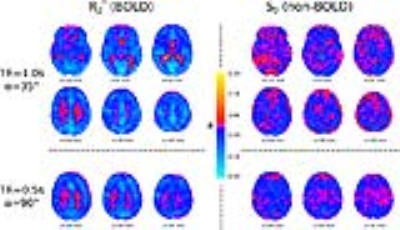 |
16 |
 Blood pressure correlated fluctuations of BOLD origin in fMRI signals: A multi-echo 7T study. Blood pressure correlated fluctuations of BOLD origin in fMRI signals: A multi-echo 7T study.
Joseph Whittaker, Ian Driver, Marcello Venzi, Kevin Murphy
Previously we have reported that fluctuations in fMRI signals at approximately 0.1Hz are highly correlated with blood pressure fluctuations at the same frequency. A multi-echo resting-state fMRI experiment was performed at 7T to separate the effect of changes in transverse relaxation (R2*) and longitudinal magnetisation (S0) in these fluctuations. We demonstrate that the magnitudes of correlations with blood pressure are significantly greater for R2* signals, compared with corresponding S0 signals. These data suggest that there is a significant proportion of BOLD dependent signal variance in fMRI that is of non-neuronal origin.
|
|
0869.
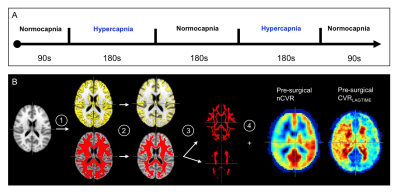 |
17 |
 Determination of white matter cerebrovascular reactivity (CVR) and CVR compliance time responses to surgical revascularization using time regression analysis of hypercapnic BOLD fMRI data Determination of white matter cerebrovascular reactivity (CVR) and CVR compliance time responses to surgical revascularization using time regression analysis of hypercapnic BOLD fMRI data
Sarah Lants, Meher Juttukonda, Spencer Waddle, Jennifer Watchmaker, Lori Jordan, Larry Davis, Matthew Fusco, Manus Donahue
We applied a novel time-regression analysis to hypercapnic BOLD imaging data in a cohort of moyamoya patients with progressive steno-occlusion of the intracranial arteries before and after surgical revascularization with the overall goal of elucidating gray and white matter differences in cerebrovascular reactivity (CVR)-weighted responses and vascular compliance time measures. We observed differences between gray and white matter reactivity time delays, as well as depth-dependent differences in reactivity and time delays within the white matter. Additionally, we observed that the improvement in both white and gray matter hemodynamics following surgical revascularization was closely related to pre-surgical CVR-weighted metrics.
|
 |
0870.
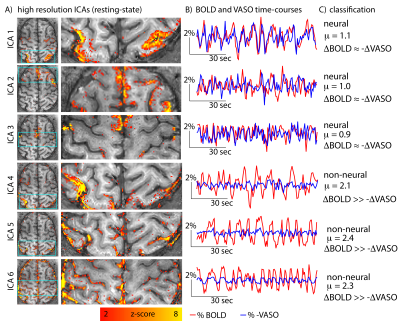 |
18 |
 Differentiating neural and non-neural fMRI signals using CBV-BOLD fMRI Differentiating neural and non-neural fMRI signals using CBV-BOLD fMRI
Laurentius Huber, Daniel Handwerker, Sean Marrett, Javier Gonzalez-Castillo, Anrew Hall, Dimo Ivanov, Maria Guidi, Peter Bandettini
fMRI is noisy and suffers from signal origin ambiguities. We propose a straightforward method that can classify the origin of neurally- and non-neurally-driven signal fluctuations by means of simultaneously acquired BOLD and CBV fMRI-data. For neurally-driven fMRI-signal fluctuations, BOLD and CBV are synchronized. For non-neurally-driven fluctuations, however, abnormal temporal correlations are seen. Upon identification of the non-neural components, they can be filtered out. This helps to remove artifacts and improve the specificity and interpretability of fMRI activation maps. Moreover, we show that it can remove venous signal components in ultra-high-resolution fMRI and improve the spatial specificity across cortical laminae.
|
|
0871.
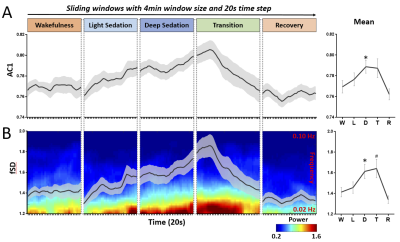 |
19 |
 Local neuronal synchronization and global functional disconnection are signatures of propofol-induced unconsciousness Local neuronal synchronization and global functional disconnection are signatures of propofol-induced unconsciousness
Anthony Hudetz, Zirui Huang, Xiaolin Liu, George Mashour
Information processing in the brain occurs through a hierarchy of temporal receptive windows (TRWs). Anesthetic drugs induce a reversible suppression of consciousness and thus offer a unique opportunity to investigate the state-dependence of TRWs. Here we demonstrate that sedation with propofol is accompanied by the prolongation of the brain’s intrinsic functional timescales, i.e. enlarged TRWs. This is accomplished by an increase of local and regional signal synchronization, which in turn disrupts information exchange among distant brain regions. Finally, we show that the brain’s information processing timescales exhibit distinct dynamic signatures in sedation, deep anesthesia, and disorders of consciousness.
|
|
0872.
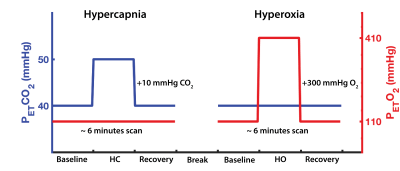 |
20 |
 Absolute quantification of resting oxygen metabolism and cerebral physiology following acute exposure to repeated sub-concussive collisions: A calibrated MRI approach Absolute quantification of resting oxygen metabolism and cerebral physiology following acute exposure to repeated sub-concussive collisions: A calibrated MRI approach
ALLEN CHAMPAGNE, NICOLE COVERDALE, MIKE GERMUSKA, DOUGLAS COOK
Athletes involved in collision sports can sustain up to ~1400 head impacts, within a single season. In this study, we explore the physiological nature of sub-concussive impacts using a calibrated MRI method, which combines hypercapnic and hyperoxic breathing manipulations. Collegiate football players were scanned at pre-season baseline and following three weeks of practices and one game. Relative to baseline, we observed global increased resting oxygen extraction fraction (OEF0) and cerebral metabolic rate of oxygen consumption (CMRO2|0) in the grey-matter, with significant differences found within the frontal lobe (P<0.05). These results emphasize the need to regulate exposure to head impacts in sports.
|
|
0873.
 |
21 |
 Evaluation of task-induced dCMRO2 with a simultaneous acquisition of CBV, CBF and BOLD signals during normoxia and hypoxia conditions Evaluation of task-induced dCMRO2 with a simultaneous acquisition of CBV, CBF and BOLD signals during normoxia and hypoxia conditions
Yaoyu Zhang, Yayan Yin, Long Qian, Yang Fan, Bing Wu, Jia-??ng Gao
Existing studies have reported various results regarding CMRO2 behaviors during hypoxia. In this study, a simultaneous acquisition of CBV, CBF and BOLD signals was implemented to evaluate task-induced δCMRO2 under both normoxia and hypoxia conditions. Of 40 subjects who completed two runs of block-designed, black-and-white checkerboard visual tasks (normoxia and hypoxia) and a CO2 challenge, we found δCMRO2 increase significantly during hypoxia. We reckon that the simultaneous acquisition technique makes it possible for all necessary data to be acquired in one run of task, thus minimizing motion and physiological artifacts caused by separate data acquisitions through task repetitions.
|
|
0874.
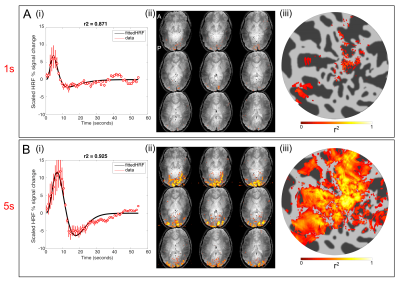 |
22 |
 Using measured Haemodynamic Response Functions in Population Receptive Field mapping at 7 T Using measured Haemodynamic Response Functions in Population Receptive Field mapping at 7 T
Michael Asghar, Denis Schluppeck, Susan Francis
In order to combat overfitting in computational encoding models, one method is to reduce the number of fit parameters. In population receptive field (pRF) mapping, a haemodynamic response function (HRF) is parameterized from the fMRI timeseries, and this may inflate model fits (r2). Here, we show that measured HRF estimates from a brief set of separate HRF measurement scans can be included in the pRF fitting procedure, reducing the degrees of freedom. We show that model fits between our “HRF-informed” pRF and the traditional fitted HRFs are comparable, suggesting that this method is more representative of the ground truth.
|
|
0875.
 |
23 |
 Visual temporal frequency preference shows a distinct cortical architecture using fMRI Visual temporal frequency preference shows a distinct cortical architecture using fMRI
Yuhui Chai, Daniel Handwerker, Sean Marrett, Andrew Hall, Javier Gonzalez-Castillo, Peter Molfese, Peter Bandettini
The functional architecture of temporal frequency preference of human visual system is not well characterized. We collected fMRI data with visual stimuli varying flicker frequency from 1 to 40 Hz. Using model fit and K-means clustering on frequency tuning curve we were able to show evidence for a temporal frequency specific architecture of visual system.
|
 |
0876.
 |
24 |
 A Probabilistic Atlas of Digit Somatotopy in the Human Primary Somatosensory Cortex A Probabilistic Atlas of Digit Somatotopy in the Human Primary Somatosensory Cortex
Ayan Sengupta, Denis Schluppeck, Eleanor Barrat, Julien Besle, Susan Francis, Rosa Sanchez Panchuelo
A probabilistic atlas of the digit representations of the left and right hand in primary somatosensory cortex is formed. The atlas is generated in volume and surface standardized space from somatotopic maps of 21 right-handed subjects obtained using a travelling wave paradigm with vibrotactile stimuli. Metrics quantify the likelihood of a given position being assigned to a digit (full probability map) and the most probable digit for a position (maximum probability map), with the atlas validated using a leave-one-out cross validation procedure. This probabilistic atlas quantifies variability in healthy subjects and can be used as a reference in patient studies.
|
|
0877.
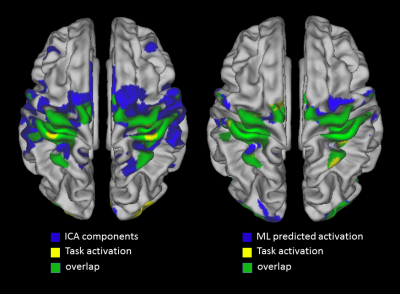 |
25 |
 Modeling Motor Task Activation from Task-free fMRI with Machine Learning: Predictions and Accuracy in Individual Subjects Modeling Motor Task Activation from Task-free fMRI with Machine Learning: Predictions and Accuracy in Individual Subjects
Elizabeth Zakszewski, Alexander Cohen, Chen Niu, Xiao Ling, Oiwi Parker Jones, Saad Jbabdi, Ming Zhang, Maode Wang, Yang Wang
This study is aimed to apply a newly developed machine learning approach to predict individual motor performance from resting state functional MRI. Our data demonstrate that resting state fMRI even using conventional EPI protocols can predict individual motor performance. Our results suggest that the novel machine learning model could more accurately predict motor function at the individual level, compared to the independent component analysis method.
|
|
0878.
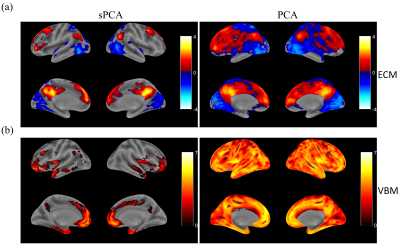 |
26 |
 Performing Sparse Regularization and Dimension Reduction Simultaneously in CCA-Based Data Fusion Performing Sparse Regularization and Dimension Reduction Simultaneously in CCA-Based Data Fusion
Zhengshi Yang, Xiaowei Zhuang, Christopher Bird, Karthik Sreenivasan, Virendra Mishra, Sarah Banks, Dietmar Cordes
Principal component analysis is commonly used in data fusion for dimension reduction prior to performing fusion analysis. However, PCA does not address that a large proportion of voxels may be irrelevant to extract joint information in data fusion. We implemented sparse PCA to suppress irrelevant voxels while simultaneously reducing the data dimension. Results show that introducing sparsity to data fusion provides better group discrimination.
|
|
0879.
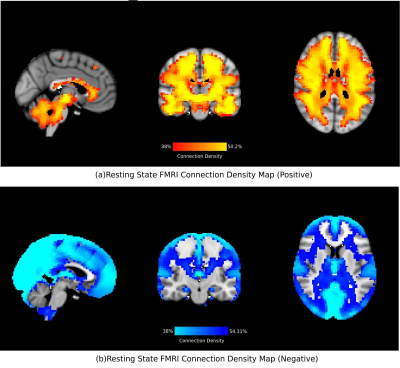 |
27 |
 Evidence of Dense Functional Connectivity in the Human Brain Evidence of Dense Functional Connectivity in the Human Brain
Ankita Saha, Ishaan Batta, Rahul Garg
Aimed at studying the nature of voxel-wise interactions in the brain, this study finds the evidence of dense functional connectivity in the brain using resting state fMRI data from over 700 subjects. To study the nature of these interactions, we used a bipartite graph embedding algorithm on the connectivity network obtained with multiple pre-processing strategies with respect to global signal regression. We also analyzed interactions between and whithin grey and white matter. The results point to a dense non-bipartite network covering 74.63% of the brain leading to new insights towards understanding the human functional connectome.
|
|
0880.
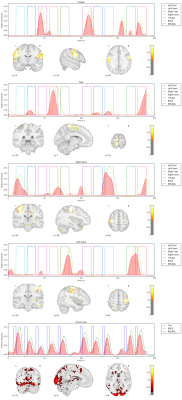 |
28 |
 Matrix Tri-Factorization for BOLD-fMRI Matrix Tri-Factorization for BOLD-fMRI
Michael Hütel, Andrew Melbourne, Sebastien Ourselin
We present Matrix Tri-Factorization as a means to obtain an individual's BOLD-fMRI decomposition into unique neuronal activation patterns, spatial network maps and their corresponding hemodynamic response functions. We validate our proposed method on the motor cortex localization task of the Human Connectome Project 1200 Subject Release and show that neural activation patterns from our proposed Unsupervised Machine Learning technique resemble the given motor task profiles.
|
|
0881.
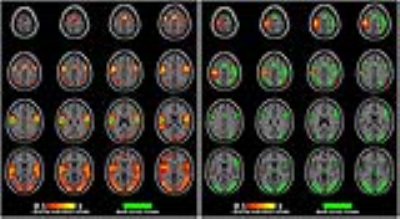 |
29 |
 Effect size and result overlap between individual and group results in fMRI studies Effect size and result overlap between individual and group results in fMRI studies
Peter Van Schuerbeek, Chris Baeken, Johan De Mey
In the fMRI literature, most authors reported solely the significance of their findings which hampered the critical interpretation of the found results and power analyses for subsequent studies. To reveal the effect size and overlap between individual subject activation maps, we reanalyzed data from multiple fMRI studies. For each of the 44 contrasts tested, our study revealed fairly strong effect sizes and reasonable overlap between the individual results. However, the overlap between the individual results and the results of the corresponding group analysis was rather poor. This observation supports the call that reporting significance solely, is not enough.
|
 |
0882.
 |
30 |
 Cross-vendor harmonization of T2-Relaxation-Under-Spin-Tagging (TRUST) MRI for the assessment of cerebral venous oxygenation Cross-vendor harmonization of T2-Relaxation-Under-Spin-Tagging (TRUST) MRI for the assessment of cerebral venous oxygenation
Dengrong Jiang, Peiying Liu, Yang Li, Deng Mao, Cuimei Xu, Hanzhang Lu
Cerebral venous oxygenation (Yv) is an important physiological parameter and has potential clinical application in many diseases. T2-relaxation-under-spin-tagging (TRUST) is a commonly used MRI method to measure Yv. Harmonization of TRUST across MRI vendors is important for dissemination and multi-center studies of brain oxygenation as a disease biomarker. In this work, we harmonized TRUST pulse sequence components and imaging parameters across two major MRI vendors, Philips and Siemens. We showed that Yvmeasured on the two vendors were highly compatible and strongly correlated, had excellent reproducibility, and can reliably detect oxygenation changes associated with physiological challenges on both scanners.
|
|

 Watch the full Pitch Session Here
Watch the full Pitch Session Here















